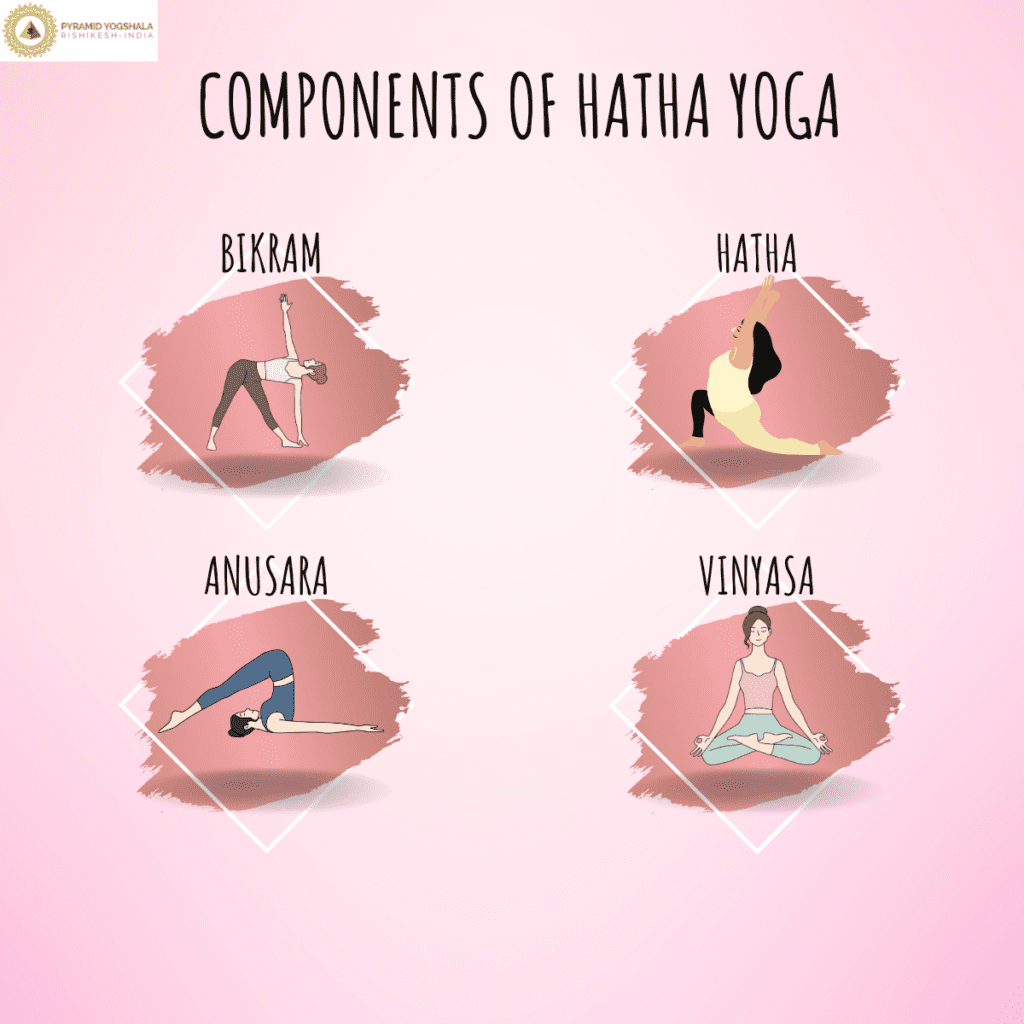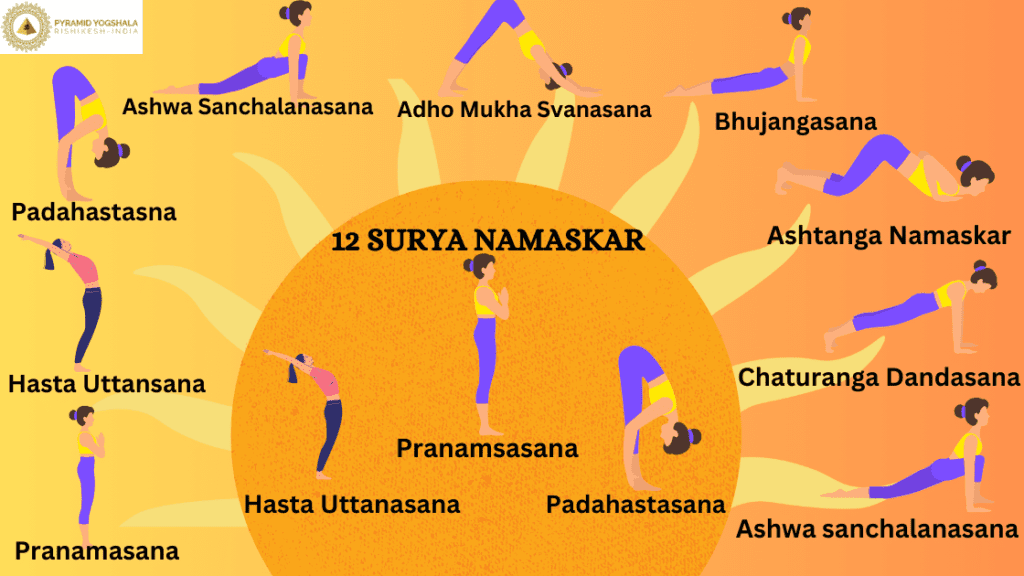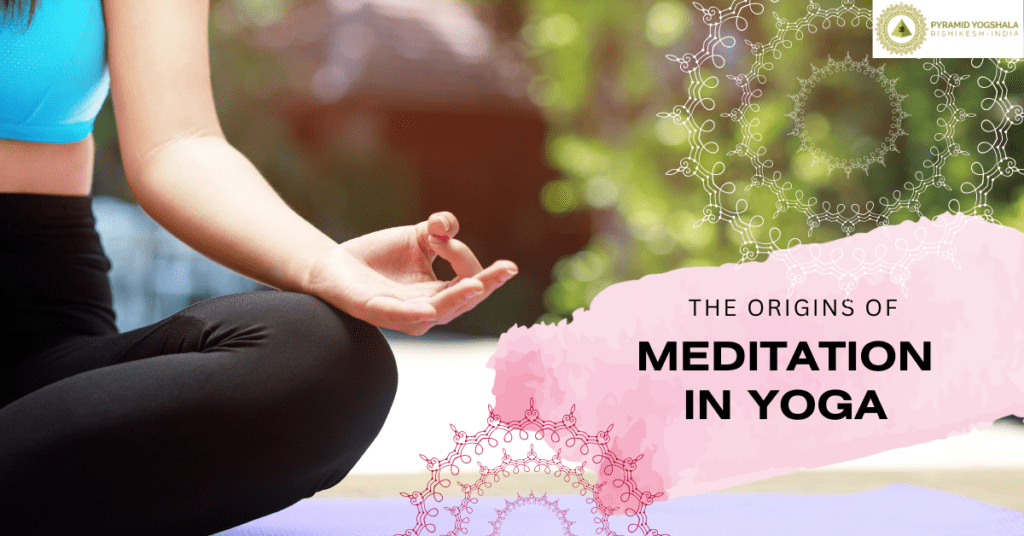Hatha Yoga is a traditional form of yoga that focuses on physical postures (asanas), breathing techniques (pranayama), and meditation. It is one of the oldest styles of yoga, known for its gentle pace and holistic approach to health. The word “Hatha” means “force” in Sanskrit, but in yoga, it symbolizes the union of the sun (ha) and the moon (tha), representing the balance of opposites. With a combination of physical, mental, and spiritual practices, Hatha Yoga helps achieve harmony in the body and mind.
What is Hatha Yoga?
Hatha Yoga is a practice that involves holding different physical poses while paying attention to your breathing. Unlike more intense yoga styles like Vinyasa, Hatha Yoga is slow-paced and focuses on basic poses, making it perfect for beginners. The goal ofYoga is to prepare the body for meditation and deeper spiritual practices by creating physical strength, flexibility, and mental clarity.
The practice originated thousands of years ago in India and has been passed down through generations, evolving over time. Today, it remains popular worldwide as a way to improve health, reduce stress, and enhance overall well-being.
Why Hatha Yoga is the Best?
It’s stands out from other yoga styles for several reasons. Here’s why many consider it the best:
- Ideal for Beginners: Hatha Yoga is beginner-friendly. The slow pace and emphasis on simple poses allow newcomers to learn the basics without feeling overwhelmed. This makes it a great entry point for those new to yoga.
- Focus on Balance: The practice of Hatha Yoga involves harmonizing the body’s energies. By focusing on breath control and alignment, it helps balance both the body and mind, leading to a feeling of calm and relaxation.
- Gentle Yet Effective: Unlike some various yoga styles, Hatha Yoga is less intense, which makes it suitable for people of all ages and fitness levels. Even though the poses are simple, they are still highly effective in building strength, increasing flexibility, and improving posture.
- Reduces Stress: The combination of breath control and gentle stretching helps calm the nervous system, reducing stress and anxiety. This makes Yoga an excellent choice for those who are looking for a natural way to manage stress.
- Improves Concentration: The mindful aspect of Hatha Yoga, which includes focusing on the breath and holding postures, sharpens mental clarity and boosts concentration. It is a great way to disconnect from the daily hustle and practice mindfulness.
The Aim of Hatha Yoga
The main aim of Hatha Yoga is to create balance in the body and mind. It seeks to prepare the body for meditation by purifying and strengthening it. It aims to develop a state of equilibrium where physical health supports mental peace. The three primary goals of Hatha Yoga are:
- Physical Health: Through various asanas, Hatha Yoga improves muscle tone, increases flexibility, and promotes joint mobility. The practice helps detoxify the body by enhancing blood circulation and stimulating the internal organs.
- Mental Clarity: It is emphasizes breath control, which helps calm the mind and clear mental clutter. It encourages the practitioner to be present in the moment, promoting a peaceful state of mind.
- Spiritual Growth: Yoga is not just about the body; it is also a spiritual practice. It helps align the chakras (energy centers in the body) and leads practitioners toward a higher state of consciousness.
The ultimate aim of Hatha Yoga is to prepare the practitioner for deeper meditation and self-realization by creating a healthy, balanced, and peaceful state of being.
The Core Components of Hatha Yoga
Hatha Yoga encompasses several key elements, each designed to promote balance and well-being:
- Asanas (Postures): The physical postures in Hatha Yoga form the basis of the practice. These poses help to increase flexibility, strength, and balance while also enhancing circulation and detoxifying the body. Unlike more dynamic styles, Yoga often involves holding poses for an extended period, allowing practitioners to explore each posture deeply.
- Pranayama (Breath Control): Breath regulation is an integral aspect of Yoga, as it helps to connect the body and mind. Techniques such as “Ujjayi” (victorious breath), “Nadi Shodhana” (alternate nostril breathing), and “Kapalabhati” (skull-shining breath) are used to increase lung capacity, calm the nervous system, and activate vital energy.
- Shatkarma (Cleansing Techniques): These ancient yogic purification practices help cleanse the internal organs and body systems. Shatkarma techniques include neti (nasal cleansing), dhauti (stomach cleansing), and kapalabhati. These methods prepare the practitioner for deeper breathing practices and meditation.
- Meditation (Dhyana): Meditation is a core component that accompanies the physical and breathing practices in Hatha Yoga. The goal is to still the mind and achieve a state of inner peace. This is facilitated by the combination of asana and pranayama, which prepare the mind for deeper levels of meditation.
- Mudras and Bandhas (Gestures and Energy Locks): These are subtle techniques used to control the flow of energy within the body. Mudras involve specific hand positions, while bandhas are energy locks created by contracting certain muscles. Together, they help direct energy to the body’s chakras and facilitate spiritual development.

Benefits of Hatha Yoga
The benefits of Hatha Yoga extend beyond the physical, positively impacting mental and emotional health as well. Here are some of the key benefits:
- Increased Flexibility and Strength: Regular practice of Yoga helps stretch and strengthen muscles, making the body more flexible. It also tones the muscles and enhances core strength, which is essential for maintaining good posture.
- Stress Relief: Hatha Yoga’s slow, controlled movements, combined with deep breathing, help relax the nervous system and reduce stress levels. Practicing regularly yoga can lead to better sleep and a more relaxed mind.
- Improved Focus and Mindfulness: The practice of Yoga encourages awareness of the body and mind, promoting mindfulness. It teaches practitioners to stay present in each moment, which helps improve focus and concentration.
- Enhanced Breathing: The breathing exercises (pranayama) in Hatha Yoga help increase lung capacity and improve overall respiratory health. It promotes deep breathing, which brings more oxygen to the body, energizing and rejuvenating it.
- Emotional Balance: By calming the mind and focusing on breath, it helps in managing emotions, leading to a more balanced state. It helps release tension and emotional blockages, promoting a sense of inner peace.
How to Start Practicing Hatha Yoga
If you are new to Hatha Yoga, here are some steps to help you get started:
- Choose a Comfortable Space: Find a quiet, comfortable space where you can practice without distractions. Make sure you have a yoga mat and wear comfortable clothing.
- Start with Basic Poses: Begin with simple poses like Tadasana (Mountain Pose), Balasana (Child’s Pose), and Sukhasana (Easy Pose). Focus on getting the alignment right rather than rushing through the poses.
- Practice Breathing Techniques: Incorporate breathing exercises such as Nadi Shodhana (Alternate Nostril Breathing) or Ujjayi Pranayama to deepen your practice and calm the mind.
- Stay Consistent: Aim to practice Hatha Yoga regularly, even if it’s just for 15-20 minutes a day. Consistency is key to experiencing the full benefits of yoga.
- End with Relaxation: Always finish your practice with a relaxation pose like Savasana (Corpse Pose) to allow the body to absorb the benefits of the session.
Conclusion
It is a time-tested practice that combines physical postures, breath control, and meditation to create balance and harmony. It is considered the best yoga style for beginners and those seeking a more gentle approach to fitness and relaxation. The aim of Hatha Yoga goes beyond physical health; it aims to create a balanced mind, enhance spiritual growth, and bring peace. By practicing regularly, you can unlock a path to better health, reduced stress, and a more balanced life.


